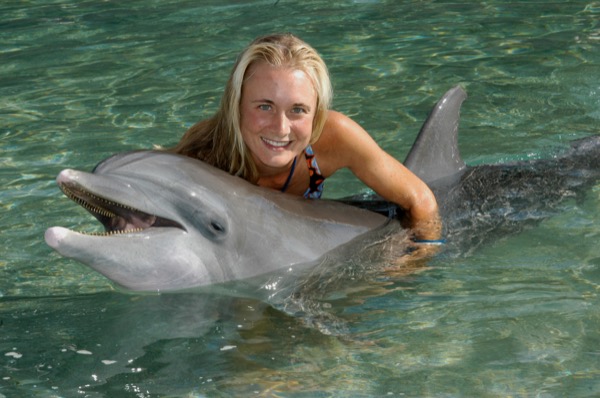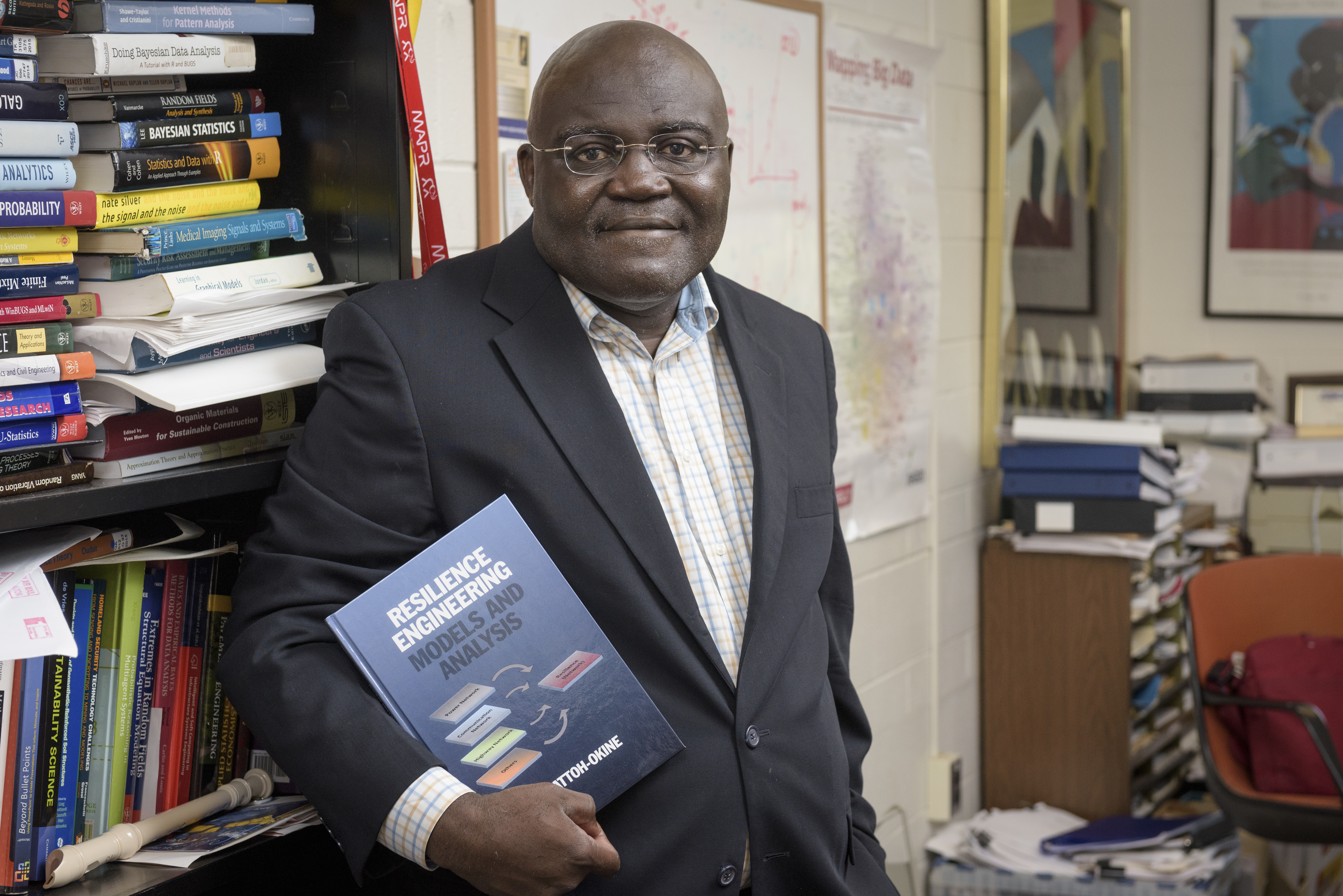
Dolphin work
UD alum dives into world of sea animal stranding, health, rehabilitation
11:54 a.m., April 13, 2015--When a dolphin calf became entangled in monofilament fishing line recently in the Indian River Lagoon near the east coast of Florida, University of Delaware alumna Wendy Marks was on hand to help with the rescue efforts.
Marks, who works for Florida Atlantic University at Harbor Branch Oceanographic Institute as part of the Stranding, Health and Rehabilitation Project team, said that with the help of multiple agencies and institutions, the group was able to track and locate the dolphin — which turned out to be a calf traveling with its mother — and eventually get the fishing line off its rostrum, or beak.
People Stories
'Resilience Engineering'
Reviresco June run
Working with dolphins has been a part of Marks’ life ever since she graduated from UD in 2002 with a bachelor’s degree in animal science from the College of Agriculture of Natural Resources (CANR) and decided that she wanted to pursue a career in large marine animal rehabilitation and conservation.
“I’ve always been kind of drawn to big animals. I grew up riding and then I rode on the UD equestrian team through college and I definitely saw my career going in a direction that works specifically with animals -- preferably hands-on and probably with some type of big animal,” said Marks, who minored in biological sciences.
Dolphin Quest
Her career path started with an unpaid internship with Dolphin Quest Hawaii on the Big Island of Hawaii, where she spent three months learning the basics of dolphin training. This led to a position as a dolphin trainer at the Dolphin Quest site in Bermuda before eventually moving back to Dolphin Quest Hawaii.
Through these positions, Marks trained dolphins and led “swim with the dolphins” programs, where she took people into the water to meet the animals and learn more about them. She was also able to instill in the visitors a basic conservation message about recycling and making sure that trash gets placed in the proper receptacles so it does not end up in the ocean.
“It was a great way to give the general public a connection between the marine environment and a charismatic marine animal. This connection created meaning and allowed us to the get across important conservation messages about pollution. We discussed how no matter where on the Earth you are located, you are affecting the environment and the critters that call it home,” said Marks. “It was quite an opportunity to not only train dolphins, but to also get a strong background in cetacean (dolphin and whale) husbandry and health care.”
Miami Seaquarium
Marks said she had an interest in learning more about marine life and getting involved in wild populations and decided to take a senior keeper position at the Miami Seaquarium in Florida.
Through this role, she helped supervise the manatee and sea turtle rehabilitation programs and oversaw a variety of animals including tropical birds, crocodiles, alligators and deer. The facility also had a resident sea turtle and manatee population that stayed on site because the animals were deemed non-releasable and would not have survived in the wild.
“This position incorporated some of my training skills with the birds and the resident animals that lived in the aquarium, and then also gave me experience doing manatee and sea turtle rehabilitation and stranding response. That was a cool combination for me,” said Marks.
Back to Hawaii
After a year at the aquarium, Marks decided to move back to Hawaii and got a job working in a small animal veterinary hospital for a short period of time before moving to Honolulu and working for the National Marine Fisheries Service, which is part of the National Oceanic and Atmospheric Administration (NOAA), at the Pacific Islands Fisheries Science Center (PIFSC).
Marks said it was a great career move because she was working in the sea turtle stranding response program that also incorporated a great deal of research.
“I was there for three years and I was mostly in charge of doing sea turtle stranding response. If a sea turtle came up on shore sick, injured, or dead, we were the ones that were called and we would go and pick up the animal,” said Marks.
Marks said that the center in Honolulu also had jurisdiction over the other islands where their stranding partners were located, and that she worked with those partners to coordinate the arrival of live or dead sea turtles to their center in order to do rehabilitation or to determine cause of death.
“NOAA PIFSC brought in live animals for rehabilitation when necessary, but also did about 120 necropsies per year on four different sea turtles species to figure out cause of death,” said Marks.
According to Marks, determining cause of death is a vital conservation component.
“Studying the dead animals and doing necropsies is very rewarding to me because you can learn more about why those animals died and better help the population that’s still alive out in the wild,” said Marks.
Marks is involved with this aspect of conservation work once again at her current position at Florida Atlantic University, adding that her current job is quite diverse.
“I do a little bit of everything. I’m a first responder for cetacean stranding calls, veterinary technician, laboratory technician and researcher,” said Marks. “I also assist with all of the necropsies. It’s very interesting to me to see some of the trends in strandings and to specifically look for reasons as to why they would strand and what is causing damage or changes to the different cetacean populations. It’s like a mystery that we keep collecting clues to.”
Time at UD
Concerning her academic career at UD, Marks said she enjoyed studying at CANR and getting hands-on experience with the animals out on the farm, which allowed her to work directly with animals and not simply learn about them in the classroom.
As for advice for any current students looking to get into her line of work, or any type of conservation work with animals, Marks said to “take your opportunities as they come, whether it’s an unpaid internship or an opportunity to volunteer. All of those experiences can really help you make connections and teach you a variety of different skills within the field that can only help you further on in your career.”
Article by Adam Thomas








